Everyday Shrubs: Physocarpus
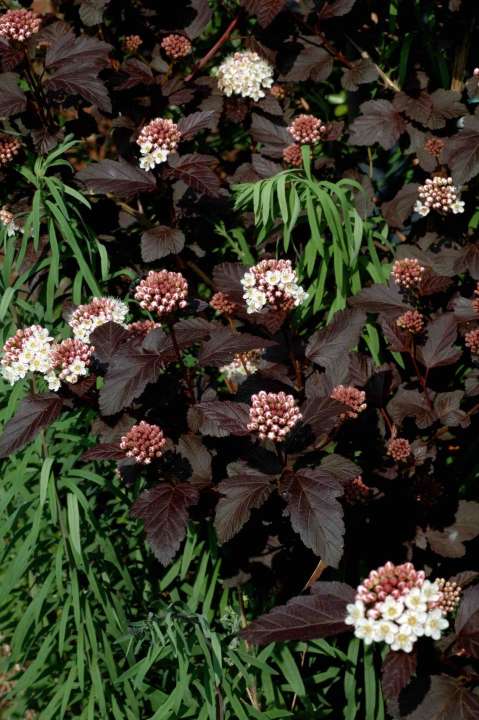
When you visit a garden centre like Nags Hall, looking for a shrub for the garden, it can be a bewildering affair! With so much choice, just what should you buy? To create a colourful display and provide inspiration, the most colourful plants and those in bloom, will always be at the entrance to inspire you but there are lots of other shrubs that never quite grab the limelight, that a great garden plants.
So over the next month I will give some much deserved attention to plants that will make a great addition to your garden. They are not as classy as camellias or as magnificent as magnolias, but they are easy to grow and should be in every garden. And to prove that I mean it, they are all among the first shrubs I planted in my own garden.
When I refer to a plant as ‘easy to grow’ I mean that it is tolerant of a wide range of soil types and general conditions and it will not punish you if you prune it incorrectly. But I don’t mean that you can just ‘shove it in’. No plant will thrive unless you prepare the soil and water it until it is well-established. That is why spring-planting is more successful than planting in the height of summer. So mix in compost with the soil before planting and keep the new resident in your garden watered in dry spells this summer to prevent it wilting and ensure it roots into the surrounding soil. To promote growth you can sprinkle around some general fertiliser in spring. There is no need to apply liquid fertiliser every week to plants in the ground except in extreme circumstances.
So I will start with Physocarpus, a shrub you may not have heard of. (fy – so – carp- us) The common name is ‘nine-bark’ which is not really very helpful so stick to physocarpus. It is a tough, deciduous (loses leaves in winter) shrub native to North America. The leaves are lobed and rounded and domed clusters of small white flowers are produced on branches more than one year old, in summer. The flowers are moderately showy and very attractive to bees. They are followed by strange, red, woody fruits that are quite showy and although eaten by birds in the wild are not useful to our birds. The wild, green-leaved form it is not really worth planting in our gardens but it is the varieties with coloured foliage that make this such a useful shrub.
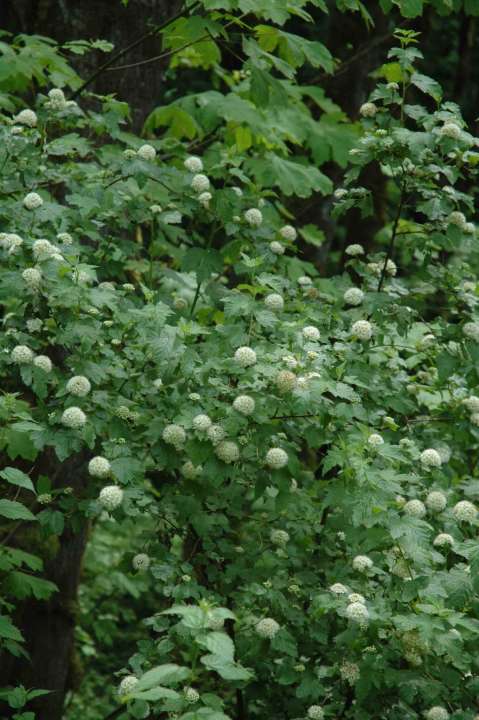
One useful advantage in choosing physocarpus is that it copes well with heavy (clay) soil and it even tolerates soil that is wet in winter. I have discovered this the hard way – my ‘new’ garden has soil that lays wet in winter and I even have a ‘bed of death’ where I struggle to keep even common shrubs alive, till now. But physocarpus has survived.
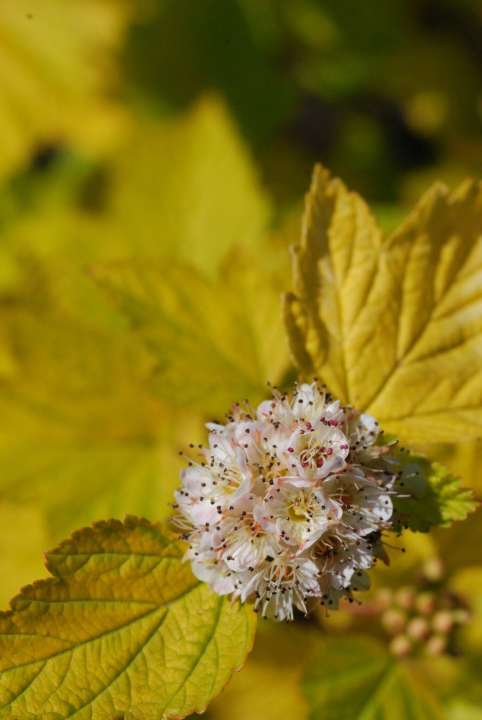
For many years the only ‘garden-worthy’ form was ‘Dart’s Gold’. There are newer golden-leaved forms but this is still among the best and is a delight each year. The foliage is most brilliant in spring and early summer and it can scorch a bit in hot sun in dry soil in summer but it is one of the easiest yellow-leaved shrubs. It is a delight from April to October and the autumn colour is even quite good. Like the rest, in winter the shaggy bark on old stems is attractive.
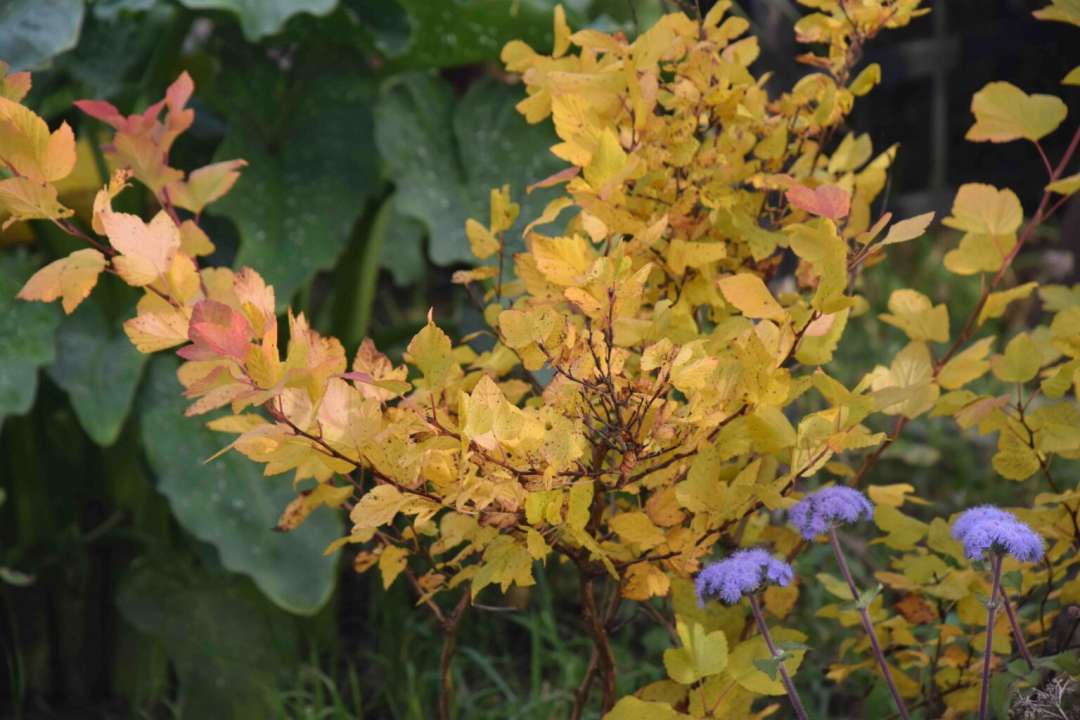
Even so, I have to admit that it is the purple-leaved forms that get my vote. My oldest is ‘Diabolo’ which is still a good place to start. Both mentioned so far, and most others, reach about 2m high within three years. ‘Diabolo’ has gorgeous dark maroon foliage. Like all purple-leaved shrubs, the colour is best in full sun. You can make your garden rather depressing if you plant too many shrubs with dark leaves but you can intersperse some gold, green and variegated leaves. I find ‘Diabolo’ the perfect backdrop to acid yellow euphorbias as well as pink salvias and dahlias.
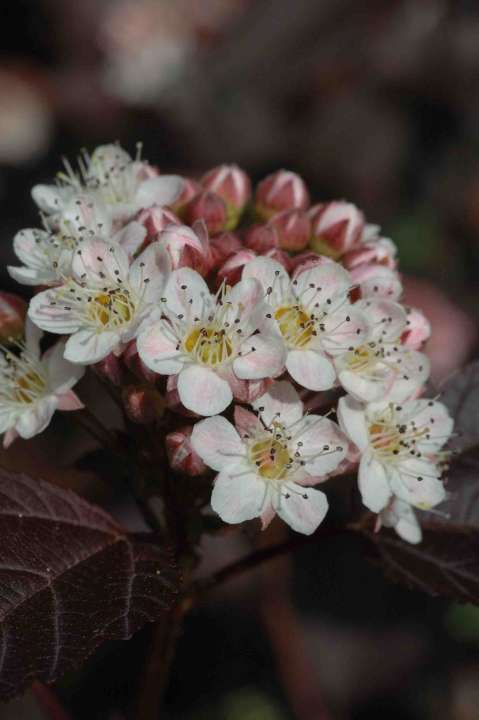
I am so smitten with physocarpus that I have added three more this winter including the gorgeous ‘Amber Jubilee’. Plant breeders are making huge strides in the breeding of these easy, hardy shrubs so look for lots of new kinds. But they are also obsessed with breeding dwarf kinds for pots. So check the labels to see the ultimate heights – some are very short and have small leaves that just don’t do it for me – but they may be just what you need! When it comes to pruning you can just leave them alone if you like and you will get lots of flowers. After three years just prune out some of the oldest, twiggy shoots. But if you like the foliage best you can prune every spring and the new, upright shoots will be covered in glorious foliage. My plants tend to get pruned now and then as I cut the foliage for flower arranging – it lasts well in water, another plus!
Physocarpus may not have the majesty of rhododendrons but they are useful and beautiful shrubs that every one can grow and they truly deserve a place in every garden.
What to do this week
If the soil is wet and it is cold, it is best not to tramp around the garden. It is also a bit early to sow much. But you could sow some peas or broad beans in a cool greenhouse to plant out in March. You could also sow some sweet peas. I have a few areas of rather bare grass and have been aerating the patches, worn by too much walking, with a fork, pushing it is, wiggling a bit and pulling it out to relieve the compaction. And you can always buy your seeds and summer bulbs.
